- Riding Lawn Mower Service Tools & Equipment
- Service Table for Snapper Lawn Mower Won’t Start
- How to Check the Battery
- How to Inspect the Spark Plug
- How to Check the Air Filter
- How to Examine the Fuel Filter
- How to Inspect the Ignition System
- How to Test a Snapper Lawn Mower Carburetor
- How to Check the Engine Oil Level
- How to Test a Safety Switch
- Snapper Lawn Mower Won’t Start F.A.Q.
If you’re experiencing difficulties with your Snapper lawn mower not starting, you’ve come to the right place. Troubleshooting and diagnosing the underlying problems can help you identify the root cause and get your mower up and running again. In this guide, we’ll explore common issues that can prevent a Snapper lawn mower from starting and provide step-by-step instructions to help you troubleshoot and resolve these problems.
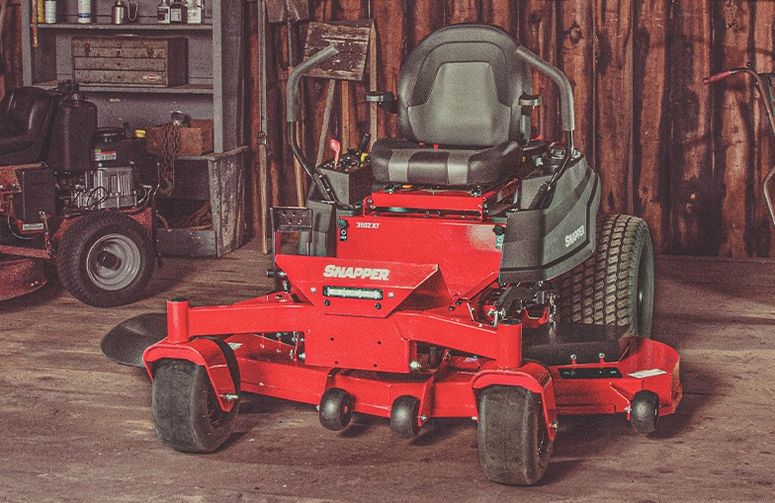
Whether it’s related to fuel, spark plug, air filter, or other components, we’ll assist you in diagnosing the issue and suggesting potential solutions. By following these troubleshooting steps, you’ll be well on your way to tackling the starting problem and enjoying a well-functioning Snapper lawn mower. Let’s get started!
Riding Lawn Mower Service Tools & Equipment
When troubleshooting a riding lawn mower that won’t start, you may need the following tools and equipment:
- Spark plug wrench or socket wrench: Used to remove and install the spark plug.
- Multimeter: Used to test electrical connections, such as battery voltage and continuity.
- Screwdrivers: Both flathead and Phillips screwdrivers may be needed to remove covers and access various components.
- Pliers: Useful for gripping and manipulating small parts.
- Fuel pressure gauge: If you suspect a fuel delivery issue, a fuel pressure gauge can help diagnose the problem.
- Wire brush: Used for cleaning corrosion or debris from electrical connections.
- Air compressor or compressed air canister: Used to blow away dirt and debris from various parts of the mower, such as the air filter or carburetor.
- Oil dipstick or level indicator: Required to check the oil level in the engine.
- Safety goggles and gloves: Always prioritize safety and protect yourself with goggles to shield your eyes and gloves to keep your hands safe.
- User manual or service manual: Consult the manufacturer’s documentation specific to your riding lawn mower for troubleshooting guidance and specific tool recommendations.
These tools and equipment should cover the basics for troubleshooting most common issues with a riding lawn mower that won’t start. However, depending on the specific make, model, and engine configuration of your mower, you may require additional tools or specialized equipment. Always refer to the manufacturer’s guidelines and documentation for the most accurate and relevant information.
Service Table for Snapper Lawn Mower Won’t Start
I can assist you with troubleshooting solutions for your Snapper lawn mower. Let’s get started with your first inquiry: a Snapper lawn mower that won’t start. Here’s a service table for troubleshooting a Snapper lawn mower that won’t start:
| Problem | Possible Causes | Troubleshooting Steps | Required Replacements |
|---|---|---|---|
| No Power | Dead battery | 1. Check battery connections | Battery |
| Faulty ignition switch | 2. Test ignition switch | Ignition switch | |
| Engine Not | Empty fuel tank | 1. Check fuel level and fill if necessary | Fuel |
| Getting Fuel | Clogged fuel filter | 2. Inspect fuel filter and replace if needed | Fuel filter |
| Blocked fuel line | 3. Clear any obstructions in the fuel line | Fuel line | |
| Faulty fuel pump | 4. Test fuel pump operation | Fuel pump | |
| No Spark | Faulty spark plug | 1. Inspect spark plug and clean or replace | Spark plug |
| Loose or damaged ignition | 2. Check ignition coil and connections | Ignition coil | |
| Faulty ignition module | 3. Test ignition module | Ignition module | |
| Engine | Low oil level | 1. Check oil level and refill if necessary | Oil |
| Overheating | Dirty cooling fins | 2. Clean cooling fins with compressed air | Air compressor |
| Clogged air filter | 3. Inspect air filter and replace if needed | Air filter | |
| Faulty cooling fan | 4. Test cooling fan operation | Cooling fan |
By following these troubleshooting steps, you should be able to diagnose common issues that can prevent your Snapper lawn mower from starting. If the problem persists or you encounter more complex issues, it’s recommended to consult the mower’s manual or seek assistance from a professional.
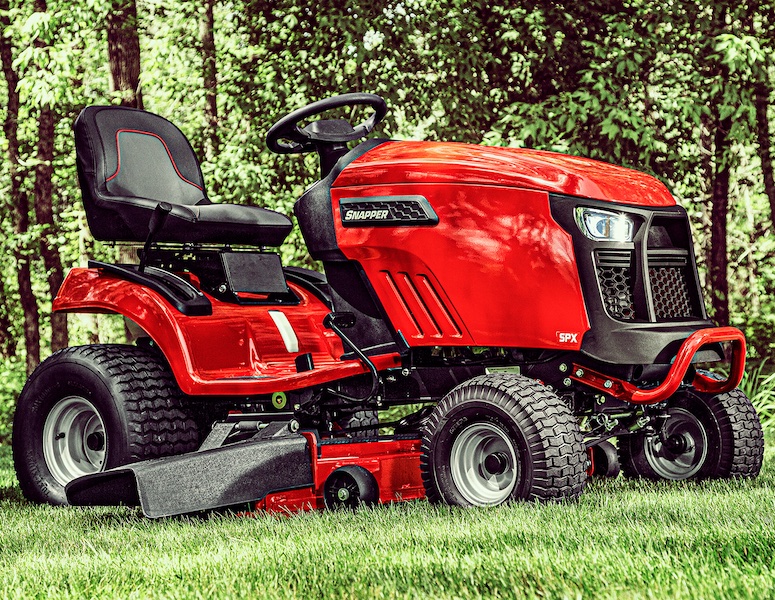
Remember to always prioritize your safety by disconnecting the spark plug wire before performing any maintenance or repairs on your lawn mower.
How to Check the Battery
Here’s a step-by-step instruction on how to check the battery if your Snapper lawn mower won’t start:
- Safety first: Before performing any maintenance or checks, ensure that the lawn mower is turned off and the spark plug wire is disconnected to prevent accidental starting.
- Locate the battery: The battery is typically located under the seat or in a battery compartment on the lawn mower. Refer to your Snapper lawn mower’s user manual for the exact location.
- Inspect the battery connections: Check the battery terminals for any signs of corrosion, dirt, or loose connections. Corrosion can appear as a white or greenish powdery substance on the terminals. If you notice corrosion, proceed to clean the terminals.
- Clean the battery terminals: If there is corrosion on the battery terminals, mix a solution of baking soda and water. Apply the solution to the terminals and use a wire brush to gently scrub away the corrosion. Rinse with clean water and dry the terminals thoroughly.
- Tighten the battery connections: Ensure that the battery terminals are securely tightened to provide a good electrical connection. Use a wrench or pliers to tighten the terminal nuts if necessary. Avoid over-tightening, as it can damage the terminals.
- Check the battery voltage: Using a multimeter set to DC voltage, touch the multimeter probes to the positive and negative battery terminals. The voltage reading should be at least 12 volts for a fully charged battery. If the voltage is significantly lower, the battery may be discharged or faulty.
- Charge or replace the battery: If the battery voltage is low, recharge the battery using an appropriate battery charger. Follow the manufacturer’s instructions for charging. If the battery fails to hold a charge or if the voltage remains low even after charging, it may need to be replaced.
- Reconnect the battery: Once you have finished checking or replacing the battery, reattach the battery cables to the appropriate terminals. Ensure that the positive cable is connected to the positive terminal and the negative cable to the negative terminal. Tighten the terminal nuts securely.
- Test the lawn mower: With the battery connected, try starting the lawn mower. If the battery was the issue, the lawn mower should now start. If it still doesn’t start, you may need to further troubleshoot other components.
Remember, if you’re unsure or uncomfortable performing these steps, it’s always best to consult a professional or refer to the Snapper lawn mower’s user manual for specific instructions related to your model.
How to Inspect the Spark Plug
Here’s a step-by-step instruction on how to inspect the spark plug if your Snapper lawn mower won’t start:
- Safety first: Before performing any maintenance or checks, ensure that the lawn mower is turned off and the spark plug wire is disconnected to prevent accidental starting.
- Locate the spark plug: The spark plug is typically located on the engine cylinder head. Refer to your Snapper lawn mower’s user manual for the exact location and type of spark plug.
- Remove the spark plug: Use a spark plug wrench or socket wrench to loosen and remove the spark plug from the engine. Turn it counterclockwise to unscrew it completely.
- Inspect the spark plug condition: Examine the spark plug for signs of wear, damage, or fouling. Here are some common observations and what they may indicate:
- Normal wear: A light tan or grayish color on the electrode and insulator indicates normal combustion.
- Fouled plug: If the spark plug appears wet, coated in black soot, or covered in oil, it may be fouled and unable to produce a spark effectively.
- Damaged plug: Look for signs of physical damage, such as a cracked insulator or bent electrode. Damaged spark plugs should be replaced.
- Clean the spark plug (if necessary): If the spark plug is lightly fouled with deposits but is otherwise in good condition, you can try cleaning it. Use a wire brush or spark plug cleaner to gently remove any carbon or debris from the electrode. Do not sandblast or use any abrasive materials, as this can damage the plug.
- Check the spark plug gap: Using a spark plug gap tool, measure the gap between the center electrode and the ground electrode. Refer to your Snapper lawn mower’s user manual for the recommended gap measurement. Adjust the gap as needed by carefully bending the ground electrode.
- Replace the spark plug (if necessary): If the spark plug is severely fouled, damaged, or if the gap cannot be adjusted within specifications, it’s best to replace the spark plug with a new one. Ensure that you use the correct spark plug type and heat range recommended for your Snapper lawn mower model.
- Install the spark plug: Insert the cleaned or new spark plug into the spark plug socket and hand-tighten it clockwise. Once it is snug, use a spark plug wrench or socket wrench to tighten it an additional 1/8 to 1/4 turn. Avoid overtightening to prevent damage.
- Reconnect the spark plug wire: Reattach the spark plug wire to the spark plug by pushing it onto the terminal until it clicks into place. Ensure a secure connection.
- Test the lawn mower: With the spark plug reinstalled and the spark plug wire connected, try starting the lawn mower. If the spark plug was the issue, the lawn mower should now start. If it still doesn’t start, you may need to further troubleshoot other components.
Remember, if you’re unsure or uncomfortable performing these steps, it’s always best to consult a professional or refer to the Snapper lawn mower’s user manual for specific instructions related to your model.
How to Check the Air Filter
To check the air filter on a Snapper lawn mower when it won’t start, follow these step-by-step instructions:
- Locate the air filter housing: The air filter housing is typically located on the side or top of the engine. It is a plastic or metal box with a cover.
- Remove the air filter cover: Use a screwdriver or a wrench, depending on the type of fasteners used, to remove the screws or nuts securing the air filter cover. Set aside the screws or nuts in a safe place.
- Remove the air filter: Lift off the air filter cover to access the air filter inside. The air filter may be secured with clips or held in place by the cover itself. Carefully remove the air filter from its housing.
- Inspect the air filter visually: Examine the air filter for dirt, dust, debris, or excessive oil saturation. If the filter appears dirty or clogged, it may restrict airflow and prevent the engine from starting.
- Clean or replace the air filter: If the air filter is dirty but still in good condition, you can clean it. Use compressed air or gently tap the filter on a flat surface to remove loose debris. If the filter is excessively dirty or damaged, it is best to replace it with a new one. Refer to the Snapper mower’s user manual for the correct replacement filter part number.
- Reinstall the air filter: Once the air filter is clean or replaced, carefully place it back into the air filter housing. Ensure that it sits properly and is securely positioned.
- Replace the air filter cover: Line up the screw holes or alignment tabs on the air filter cover with the corresponding holes on the housing. Insert the screws or nuts and tighten them securely, but be careful not to overtighten.
- Start the lawn mower: With the air filter properly installed, attempt to start the Snapper lawn mower. If the air filter was causing the issue, cleaning or replacing it should improve the mower’s starting performance.
Regularly inspecting and maintaining the air filter is crucial for proper engine performance. It is recommended to check and clean or replace the air filter at least once per mowing season or as needed, depending on the operating conditions and the amount of debris encountered.
How to Examine the Fuel Filter
To examine the fuel filter on a Snapper lawn mower when it won’t start, follow these step-by-step instructions:
- Locate the fuel filter: The fuel filter is typically located between the fuel tank and the carburetor. It may be inline along the fuel line or integrated within the fuel tank.
- Turn off the fuel supply: If your Snapper lawn mower has a fuel shutoff valve, turn it to the “Off” position. This prevents fuel from flowing while you examine the filter.
- Prepare the necessary tools: You will need a pair of pliers, a clean cloth, and a container to catch any fuel that may spill during the process.
- Loosen the fuel filter connections: If the fuel filter has removable fuel lines, use the pliers to loosen the hose clamps or connectors securing the fuel lines to the filter. Carefully slide the clamps away from the filter to release the fuel lines.
- Remove the fuel filter: Once the fuel lines are disconnected, carefully remove the fuel filter from its mounting bracket or housing. Pay attention to the orientation of the filter for reinstallation.
- Examine the fuel filter visually: Inspect the fuel filter for any signs of debris, clogs, or discoloration. A dirty or clogged fuel filter can restrict fuel flow and cause starting issues. If the filter is damaged, cracked, or excessively dirty, it should be replaced.
- Clean or replace the fuel filter: If the fuel filter appears dirty but still in good condition, you can attempt to clean it. Gently rinse the filter with clean fuel or use a fuel system cleaner to remove any debris. If the filter is severely clogged or damaged, it is recommended to replace it with a new one.
- Reinstall the fuel filter: Place the cleaned or new fuel filter back into its mounting bracket or housing, ensuring it is oriented correctly. Reconnect the fuel lines, making sure the hose clamps or connectors are tightened securely.
- Turn on the fuel supply: If you previously turned off the fuel shutoff valve, turn it back to the “On” position. This allows fuel to flow through the system.
- Check for fuel leaks: With the fuel filter and fuel lines securely connected, inspect for any fuel leaks around the filter or connections. If you notice any leaks, tighten the connections or replace any damaged components.
- Start the lawn mower: Attempt to start the Snapper lawn mower. If a clogged or faulty fuel filter was the issue, cleaning or replacing it should improve the fuel flow and help the mower start more easily.
Regularly inspecting and maintaining the fuel filter is essential for proper fuel delivery and engine performance. It is recommended to check and clean or replace the fuel filter at least once per mowing season or as needed, depending on the operating conditions and the quality of the fuel used.
How to Inspect the Ignition System
To inspect the ignition system on a Snapper lawn mower when it won’t start, follow these step-by-step instructions:
- Ensure safety precautions: Before inspecting the ignition system, make sure the lawn mower is turned off and the spark plug wire is disconnected to prevent accidental starts.
- Locate the ignition components: The ignition system includes several components such as the spark plug, ignition coil, spark plug wire, and ignition switch. Familiarize yourself with the location of these components on your Snapper lawn mower.
- Inspect the spark plug: Start by removing the spark plug wire from the spark plug. Use a spark plug socket and ratchet to carefully remove the spark plug from the engine. Inspect the spark plug for any signs of damage, such as fouling, wear, or corrosion. If the spark plug is dirty or worn out, it may prevent the engine from starting.
- Check the spark plug gap: Using a spark plug gap tool, measure the gap between the electrode and the ground electrode on the spark plug. Refer to the manufacturer’s specifications to ensure the gap is within the recommended range. If the gap is too small or too large, adjust it accordingly using the gap tool.
- Clean or replace the spark plug: If the spark plug is dirty or fouled, you can clean it using a wire brush or a spark plug cleaner. Ensure the spark plug is completely dry before reinstalling it. If the spark plug is damaged, excessively worn, or cannot be cleaned, it should be replaced with a new one.
- Inspect the spark plug wire: Inspect the spark plug wire for any signs of damage, such as cracks, cuts, or fraying. Make sure the wire is securely connected to both the spark plug and the ignition coil. If the wire is damaged, it should be replaced with a new one.
- Check the ignition coil: Inspect the ignition coil for any visible signs of damage, such as cracks or corrosion. Ensure the ignition coil is securely mounted and all electrical connections are tight. If the ignition coil is faulty or damaged, it may need to be replaced.
- Test the spark plug for spark: Reconnect the spark plug wire to the spark plug. Leave the spark plug threads in contact with the engine block. Pull the starter cord or engage the electric starter while observing the spark plug electrode. Look for a strong, blue spark across the electrode gap. If there is no spark or the spark is weak, there may be an issue with the ignition system that requires further inspection or professional assistance.
- Reinstall the spark plug: Once the inspection and testing are complete, reinstall the spark plug into the engine using the spark plug socket and ratchet. Ensure the spark plug is tightened to the manufacturer’s recommended torque specification.
- Reconnect the spark plug wire: Slide the spark plug wire back onto the spark plug until it clicks into place. Ensure a secure connection is made.
- Attempt to start the lawn mower: With the ignition system components inspected and any necessary replacements made, attempt to start the Snapper lawn mower. If the ignition system was the cause of the starting issue, addressing any faults or replacing damaged components should help the engine start more easily.
Regularly inspecting and maintaining the ignition system is important for reliable engine performance.
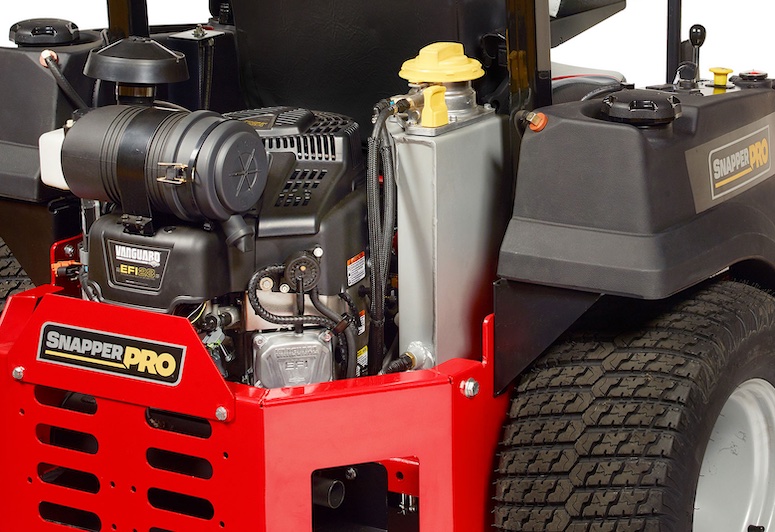
It is recommended to check the spark plug and ignition system components periodically, following the manufacturer’s guidelines or as needed based on operating conditions and the mower’s usage.
How to Test a Snapper Lawn Mower Carburetor
To test the carburetor on a Snapper lawn mower when it won’t start, follow these step-by-step instructions:
- Ensure safety precautions: Before testing the carburetor, make sure the lawn mower is turned off and the spark plug wire is disconnected to prevent accidental starts. Also, work in a well-ventilated area away from open flames or sparks.
- Locate the carburetor: The carburetor is typically mounted on the side or top of the engine. Refer to your Snapper lawn mower’s manual to locate the carburetor.
- Check for fuel flow: Start by checking if fuel is flowing into the carburetor. Turn the fuel valve on (if applicable) and observe if fuel is reaching the carburetor. You may need to remove the fuel line from the carburetor inlet and gently squeeze the fuel line or use a hand-operated fuel pump to see if fuel flows freely.
- Inspect the carburetor exterior: Visually inspect the carburetor for any signs of damage, such as cracks, leaks, or loose connections. Ensure all the carburetor fittings and hoses are tightly connected.
- Remove and disassemble the carburetor (optional): If you suspect internal issues with the carburetor, you may need to remove and disassemble it for a thorough inspection. Refer to your Snapper lawn mower’s manual for specific instructions on carburetor removal and disassembly.
- Inspect the carburetor components: Examine the carburetor components, including the float, needle valve, jets, and gaskets. Look for any signs of blockage, corrosion, or wear. Clean the components using a carburetor cleaner and a soft brush if necessary.
- Check the float and needle valve: Ensure the float moves freely and is not sticking. The needle valve should also move smoothly without any obstruction. If either the float or needle valve is damaged or not functioning properly, they may need to be replaced.
- Clean the jets: Use a small wire or a carburetor cleaning tool to clean the jets, which are small orifices that control the fuel flow in the carburetor. Ensure all the jets are clear and free from debris.
- Reassemble and reinstall the carburetor (if disassembled): If you have disassembled the carburetor, carefully reassemble it, ensuring all components are properly aligned and tightened according to the manufacturer’s specifications. Refer to your Snapper lawn mower’s manual for specific instructions on carburetor reinstallation.
- Reconnect the fuel line: If you disconnected the fuel line earlier, reconnect it securely to the carburetor inlet.
- Reconnect the spark plug wire: Slide the spark plug wire back onto the spark plug until it clicks into place. Ensure a secure connection is made.
- Attempt to start the lawn mower: With the carburetor inspected and any necessary cleaning or repairs made, attempt to start the Snapper lawn mower. If the carburetor was the cause of the starting issue, addressing any faults or blockages should help improve the engine’s fuel delivery and increase the likelihood of starting.
Please note that working on the carburetor requires some mechanical knowledge and skills.
If you are uncomfortable or unsure about performing these steps, it is recommended to seek assistance from a qualified technician or a Snapper authorized service center.
How to Check the Engine Oil Level
To check the engine oil level on a Snapper lawn mower when it won’t start, follow these step-by-step instructions:
- Ensure safety precautions: Before checking the engine oil level, make sure the lawn mower is turned off and the spark plug wire is disconnected to prevent accidental starts. Also, work in a well-ventilated area away from open flames or sparks.
- Locate the engine oil dipstick: The engine oil dipstick is typically located on the side or top of the engine. Refer to your Snapper lawn mower’s manual to locate the dipstick.
- Clean the dipstick: Use a clean cloth or paper towel to wipe off any dirt or debris from the dipstick.
- Insert the dipstick: Insert the dipstick fully into the dipstick tube. Make sure it is inserted straight and seated securely.
- Remove and check the oil level: Remove the dipstick from the tube and observe the oil level. The dipstick usually has markings or indicators to indicate the minimum and maximum oil levels. The oil level should be between these two markers.
- Check the oil condition: While checking the oil level, also examine the oil’s color and consistency. The oil should appear clean and translucent, not excessively dirty or thick. If the oil appears dark, gritty, or has a burnt smell, it may be time for an oil change.
- Add oil if necessary: If the oil level is below the minimum marker or if the oil condition is poor, it’s important to add the appropriate type and amount of oil. Refer to your Snapper lawn mower’s manual for the recommended oil type and capacity. Use a funnel to pour the oil into the engine oil fill port, and avoid overfilling. It’s always better to add oil in small increments and recheck the level.
- Reinsert the dipstick: Once the oil level is at the proper range, reinsert the dipstick into the tube and ensure it is seated securely.
- Reconnect the spark plug wire: Slide the spark plug wire back onto the spark plug until it clicks into place. Ensure a secure connection is made.
- Attempt to start the lawn mower: With the engine oil level checked and any necessary oil added, attempt to start the Snapper lawn mower. Ensuring the engine has the correct oil level helps provide lubrication and prevents damage to internal components, increasing the chances of successful starting.
Remember to consult your Snapper lawn mower’s manual for specific instructions and recommended oil type and capacity. If you’re unsure about performing these steps or have any concerns, it’s advisable to seek assistance from a qualified technician or a Snapper authorized service center.
How to Test a Safety Switch
To test a Snapper lawn mower safety switch, follow these step-by-step instructions:
- Ensure safety precautions: Before performing any maintenance or testing, make sure the lawn mower is turned off and the spark plug wire is disconnected to prevent accidental starts. Also, work in a well-ventilated area away from open flames or sparks.
- Locate the safety switch: The safety switch is typically located near the handle or control panel of the Snapper lawn mower. Refer to your mower’s manual to identify the exact location of the safety switch.
- Inspect the switch for physical damage: Visually examine the safety switch for any signs of physical damage, such as loose connections, broken wires, or corrosion. If you notice any damage, the switch may need to be replaced.
- Test the continuity of the switch: With a multimeter set to the continuity or ohms setting, test the switch for continuity. This will determine if the switch is functioning properly. Start by connecting the multimeter leads to the switch terminals or wires.
- Activate the safety switch: Depress or engage the component that activates the safety switch. This could be the brake pedal, the clutch lever, or another mechanism, depending on your Snapper lawn mower model. The purpose of this step is to simulate the normal operation that would engage the safety switch during normal use.
- Check for continuity: While the safety switch is activated, check the multimeter reading. If the switch is functioning correctly, the multimeter should show continuity, indicating that electrical current can flow through the switch. If there is no continuity or the reading is significantly different from the expected value, the switch may be faulty and should be replaced.
- Repeat the test for all safety switches: Some Snapper lawn mowers may have multiple safety switches, such as seat switches or blade engagement switches. If your mower has additional safety switches, repeat the same testing process for each switch.
- Replace the safety switch if necessary: If the safety switch fails the continuity test or shows signs of physical damage, it is recommended to replace the switch with a new one. Refer to your Snapper lawn mower’s manual or consult a qualified technician for the correct replacement part and installation instructions.
- Reconnect the spark plug wire: Once you have completed the safety switch test or replacement, slide the spark plug wire back onto the spark plug until it clicks into place. Ensure a secure connection is made.
- Test the lawn mower operation: With the safety switch tested or replaced, attempt to start and operate the Snapper lawn mower as you normally would. Verify that the safety features are functioning correctly and that the mower starts and runs properly.
It’s important to note that these instructions are general guidelines, and specific steps may vary depending on your Snapper lawn mower model. Always refer to your mower’s manual for detailed instructions and safety guidelines. If you’re unsure about performing these steps or have any concerns, it’s advisable to seek assistance from a qualified technician or a Snapper authorized service center.
Snapper Lawn Mower Won’t Start F.A.Q.
Here’s an FAQ section for Snapper lawn mowers that won’t start:
Q1: My Snapper lawn mower won’t start. What could be the possible reasons?
A: There could be several reasons why your Snapper lawn mower won’t start. Common causes include a dead battery, a faulty spark plug, clogged air filter, dirty fuel filter, issues with the ignition system, or a malfunctioning safety switch.
Q2: How can I determine if the battery is causing the problem?
A: To check the battery, use a multimeter to measure its voltage. A fully charged battery should read around 12.6 volts. If the voltage is significantly lower or the battery is not holding a charge, it may need to be charged or replaced.
Q3: What should I do if the spark plug is faulty?
A: If you suspect a faulty spark plug, remove it and inspect the electrode for signs of wear, damage, or carbon buildup. Clean or replace the spark plug as necessary. Ensure that the spark plug gap is set correctly according to the manufacturer’s specifications.
Q4: How often should I clean or replace the air filter?
A: The air filter should be checked regularly, especially if the mower is operating in dusty or dirty conditions. It’s recommended to clean or replace the air filter annually or more frequently if it appears dirty or clogged.
Q5: What should I do if the carburetor is dirty?
A: A dirty carburetor can cause starting problems. Remove the carburetor and clean it using a carburetor cleaner. Pay attention to the small passages and jets that may be clogged. If cleaning doesn’t solve the issue, you may need to rebuild or replace the carburetor.
Q6: Can a clogged fuel filter prevent the mower from starting?
A: Yes, a clogged fuel filter can restrict fuel flow to the engine, causing starting issues. Inspect the fuel filter and replace it if it appears dirty or clogged.
Q7: What should I do if the ignition system is the problem?
A: Check the ignition coil, spark plug wire, and other ignition system components for damage or wear. Ensure all connections are secure. If necessary, consult a qualified technician for further diagnosis and potential replacement.
Q8: What type of fuel should I use in my Snapper lawn mower?
A: Most Snapper lawn mowers are designed to run on unleaded gasoline with a minimum octane rating of 87. Avoid using old or stale fuel, and do not mix oil with gasoline unless your mower requires a specific fuel-oil mixture.
Q9: Can lack of oil cause starting problems?
A: Yes, insufficient oil level or dirty oil can cause starting issues. Check the oil level using the dipstick and top it up if needed. Also, ensure that the oil is clean and not overdue for a change.
Q10: How can I test the safety switch on my Snapper lawn mower?
A: Refer to the step-by-step instructions provided earlier in this guide for testing the safety switch. Use a multimeter to check for continuity while activating the safety switch.
Q11: What should I do if none of the troubleshooting steps resolve the issue?
A: If you’ve gone through the troubleshooting steps and your Snapper lawn mower still won’t start, it’s recommended to consult a qualified technician or a Snapper authorized service center for further diagnosis and repairs. They have the expertise and tools to identify and resolve complex issues.
Remember, always refer to your Snapper lawn mower manual for specific instructions and safety precautions. If you are unsure about performing any troubleshooting or repairs, it’s best to consult a qualified technician or contact a Snapper authorized service center for assistance.
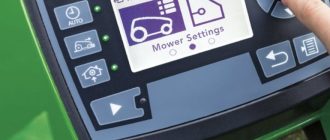
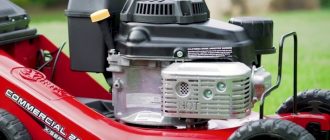
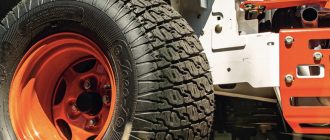
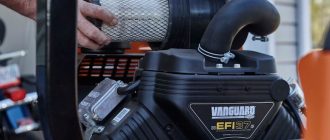


Why does my Snapper lawn mower not start after it has run for a while and then started again later in the day?
There could be a few reasons why your Snapper riding lawn mower doesn’t start after running for a while and then being started again later in the day. Here are a few possible explanations:
1. Overheating: If your mower gets too hot during operation, it may have trouble starting again until it cools down. Check the cooling system, such as the air filter and cooling fins, to ensure proper airflow and cooling.
2. Fuel Issues: It’s possible that there is a problem with the fuel supply or the fuel filter. Check to make sure there is fresh, clean fuel in the tank and that the fuel filter isn’t clogged or dirty.
3. Ignition System: The ignition system, including the spark plug and ignition coil, could be malfunctioning. Inspect the spark plug for signs of wear or damage, and ensure that the ignition coil is providing sufficient voltage to the spark plug.
4. Carburetor Problems: If the carburetor is dirty or clogged, it may need to be cleaned or rebuilt. A dirty carburetor can cause fuel flow issues, preventing the engine from starting or running properly.
5. Electrical Issues: Check the battery and electrical connections to ensure they are secure and functioning properly. If the battery is old or weak, it may not have enough power to start the mower.
6. Safety Switches: Many lawn mowers have safety switches that prevent the engine from starting if certain conditions are not met, such as the parking brake not being engaged or the blade engagement lever being in the wrong position. Check these switches to ensure they are properly engaged and functioning.
If none of these suggestions solve the issue, it may be beneficial to consult a professional technician or contact the Snapper customer support team for further assistance
What should I do if the spark plug is faulty?
Check the spark plug for signs of wear, damage, or fouling. Clean or replace the spark plug as needed, ensuring the proper gap as per the manufacturer’s specifications.